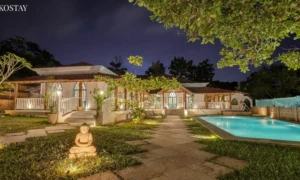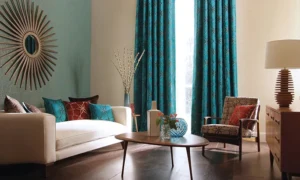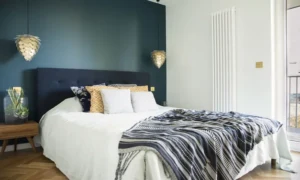When it comes to interior design, an area rug has the power to transform a room, adding warmth, style, and a sense of completeness. However, selecting the right size for your area rug is crucial to achieve the desired aesthetic and functionality. In this comprehensive guide, we will explore the key factors to consider when picking the perfect area rug size for your space.
Define the Purpose of the Rug
Before diving into the specifics, it’s important to identify the purpose of the area rug in your room. Do you want it to serve as a focal point, anchor a furniture arrangement, or add a cozy touch to a specific area? Understanding the role of the rug will help you determine the appropriate size to fulfill your design goals.
Consider Room Dimensions
The size of the room plays a vital role in determining the ideal area rug dimensions. For larger rooms, you’ll want a rug that adequately fills the space without overwhelming it. In smaller rooms, a larger rug may make the area appear cramped. Take precise measurements of your room to guide your rug selection process.
Furniture Placement
The placement of furniture is a crucial factor when choosing the right area rug sizes. In most cases, it’s recommended to have at least the front legs of the furniture sitting on the rug. This helps to create a cohesive and visually appealing arrangement. Consider the placement of your sofa, chairs, and tables to determine how much coverage you’ll need from the rug.
Leave Adequate Border Space
Leaving a border of flooring visible around the edges of the room is important for maintaining balance and visual appeal. Ideally, aim for 8-24 inches of exposed flooring between the edge of the rug and the walls. This buffer zone helps prevent the rug from overpowering the space and provides a clean and polished look.
Room-Specific Considerations
Different rooms have specific considerations when it comes to choosing the right area rug size:
Living Room: In the living room, the rug should be large enough to accommodate the seating area, allowing all furniture legs to rest comfortably on the rug. A common guideline is to choose a rug that extends at least 6-12 inches beyond the edges of the furniture.
Dining Room: For the dining room, the rug should be large enough to accommodate both the table and chairs, even when they are pulled out. The rug should extend at least 24 inches beyond the table on all sides to ensure chairs remain on the rug when pulled back.
Bedroom: In the bedroom, the area rug can be placed at the foot of the bed or extend beyond the sides of the bed. Ensure the rug is wide enough to extend beneath the bedside tables for a cohesive and balanced look.
Consider Rug Shapes
In addition to size, rug shape can also influence the overall aesthetics of your space. Rectangular rugs are versatile and work well in most rooms, while round rugs can soften the look of a space and are great for creating a cozy reading nook or adding interest to an entryway. Consider the shape that complements your room’s layout and furniture arrangement.
Experiment with Layering
Layering rugs can add depth, texture, and visual interest to a room. You can pair a smaller rug with a larger one to create a focal point or define specific areas within a larger space. Layering can be a creative way to introduce different colors, patterns, and textures into your room while allowing for flexibility in rug size selection.
Trust Your Instincts and Style
Ultimately, trust your instincts and personal style when choosing the right area rug size. Guidelines are helpful, but it’s important to consider your own preferences and the overall aesthetic you wish to achieve. Don’t be afraid to step outside the norm and experiment with different rug sizes to create a unique and personalized look.
Conclusion
Choosing the right area rug size is a crucial step in creating a harmonious and visually appealing space. By considering room dimensions, furniture placement, purpose, and specific room requirements, you can confidently select the perfect rug size. Remember to leave adequate border space, experiment with layering, and trust your instincts and style preferences. With these tips in mind, you’ll be well on your way to finding the ideal area rug size that enhances your space and complements your overall design vision.






































